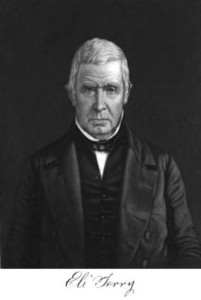 Two hundred fifty years ago today, clockmaker Eli Terry was born on April 13, 1772 in (what is now) South Windsor, Connecticut, USA. He was one of the earliest industrialists using mass production with interchangeable parts in the USA, contemporary with the better-known muskets of Honoré Blanc in France (ca. 1785), and long before John Hancock Hall at the Harpers Ferry Armory (ca. 1824). His name is known mostly to nerds in manufacturing and horology, but I believe his achievements deserve recognition. Hence I will go back in history to look at his life.
Two hundred fifty years ago today, clockmaker Eli Terry was born on April 13, 1772 in (what is now) South Windsor, Connecticut, USA. He was one of the earliest industrialists using mass production with interchangeable parts in the USA, contemporary with the better-known muskets of Honoré Blanc in France (ca. 1785), and long before John Hancock Hall at the Harpers Ferry Armory (ca. 1824). His name is known mostly to nerds in manufacturing and horology, but I believe his achievements deserve recognition. Hence I will go back in history to look at his life.
History
50 Years after the Death of Lillian Evelyn Gilbreth
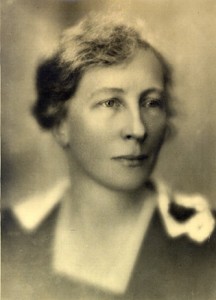
Fifty years ago today, Lillian Evelyn Gilbreth (May 24, 1878 – January 2, 1972) passed away. She was an early pioneer in optimizing and streamlining work, which is especially remarkable in a time when women were supposed to be at home in the kitchen instead of pursuing science and engineering. I already wrote briefly about her, her husband, and Frederick Winslow Taylor in my post The Tale of Taylor and Gilbreth. I also have her portrait, among other key people in the history of manufacturing, hanging in my office. Let’s have a look at the life of this very remarkable and outstanding woman!
115 Years after the Birth of Joseph Juran
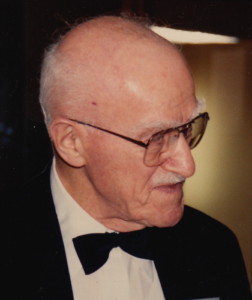 On Christmas Eve 115 years ago, Joseph Moses Juran (December 24, 1904 – February 28, 2008) was born. He was a highly respected and very influential quality guru. His work not only helped the United States, but also changed Japan, possibly even more than that of his better-known colleague Edwards Deming. Time to look back on his life’s impact on the world.
On Christmas Eve 115 years ago, Joseph Moses Juran (December 24, 1904 – February 28, 2008) was born. He was a highly respected and very influential quality guru. His work not only helped the United States, but also changed Japan, possibly even more than that of his better-known colleague Edwards Deming. Time to look back on his life’s impact on the world.
150 Years after the Birth of Albert Kahn
 Albert Kahn (1869–1942) is an often unknown but very influential figure in the history of manufacturing. An architect by trade, he revolutionized industrial architecture, and is often nicknamed the “Architect of Detroit.” Most modern factories have a design that goes back to his innovations. Since he was born exactly 150 years ago on March 21, 1869, it is a good time to look at his achievements.
Albert Kahn (1869–1942) is an often unknown but very influential figure in the history of manufacturing. An architect by trade, he revolutionized industrial architecture, and is often nicknamed the “Architect of Detroit.” Most modern factories have a design that goes back to his innovations. Since he was born exactly 150 years ago on March 21, 1869, it is a good time to look at his achievements.
Hoshin Kanri and the Kanri Noryoku Program: Rejuvenating Toyota
How Cheap Can You Make it?
 I was on a quest, a quest to find the cheapest ballpoint pen possible. And what I found was amazing. Modern manufacturing has achieved stunning productivity, where even a complex product like a ballpoint pen can be produced at costs that were unbelievable only a few decades ago. While everybody can make a pen, the goal in manufacturing is always to make it cheaper! For the same functionality, the customer will almost always go for the cheaper products. Let me show you the results of my quest.
I was on a quest, a quest to find the cheapest ballpoint pen possible. And what I found was amazing. Modern manufacturing has achieved stunning productivity, where even a complex product like a ballpoint pen can be produced at costs that were unbelievable only a few decades ago. While everybody can make a pen, the goal in manufacturing is always to make it cheaper! For the same functionality, the customer will almost always go for the cheaper products. Let me show you the results of my quest.
25 Years after W. Edwards Deming
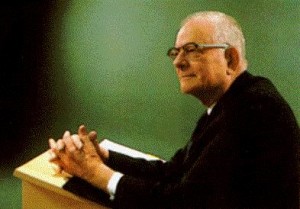 Twenty-five years ago today, William Edwards Deming (October 14, 1900 – December 20, 1993) passed away. He greatly influenced the management of quality in Japan, where he is still revered as one of the great gurus in manufacturing. Through his influence on Toyota, his ideas are now common in the lean world. Time to look back at his life.
Twenty-five years ago today, William Edwards Deming (October 14, 1900 – December 20, 1993) passed away. He greatly influenced the management of quality in Japan, where he is still revered as one of the great gurus in manufacturing. Through his influence on Toyota, his ideas are now common in the lean world. Time to look back at his life.
More on TWI Programs
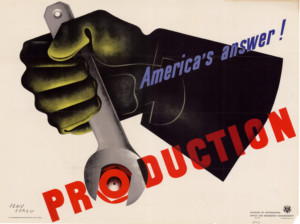 The TWI Program during World War II was very successful. Besides the Job Instructions, Job Methods, and Job Relations, a few other modules were developed, some of them internally. After the war, different institutions took over what the US government abandoned in December 1945. These follow-up institutions were the TWI Foundation and the TWI Inc. in the US; but it was also continued by the British TWI Service and the New Zealand TWI Service, and it was especially successful in Japan. Altogether, TWI was used in around seventy countries in 1960, although with quite different intensity and much less than when the US government used it through the war. This is the last in a series of five posts on TWI.
The TWI Program during World War II was very successful. Besides the Job Instructions, Job Methods, and Job Relations, a few other modules were developed, some of them internally. After the war, different institutions took over what the US government abandoned in December 1945. These follow-up institutions were the TWI Foundation and the TWI Inc. in the US; but it was also continued by the British TWI Service and the New Zealand TWI Service, and it was especially successful in Japan. Altogether, TWI was used in around seventy countries in 1960, although with quite different intensity and much less than when the US government used it through the war. This is the last in a series of five posts on TWI.

